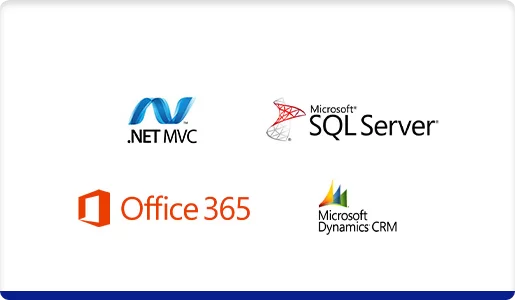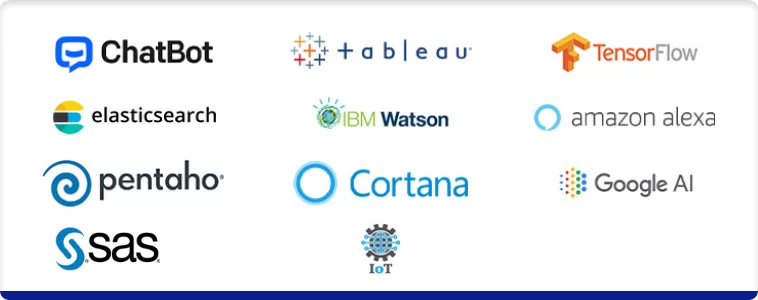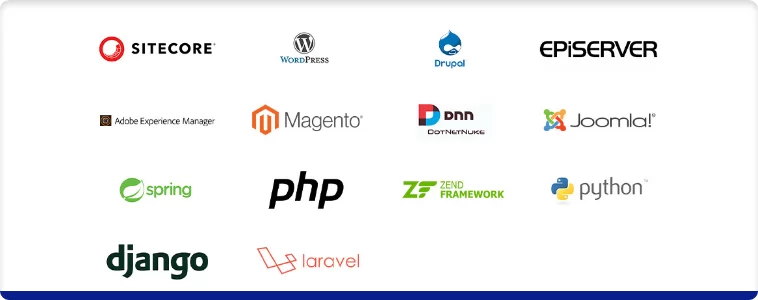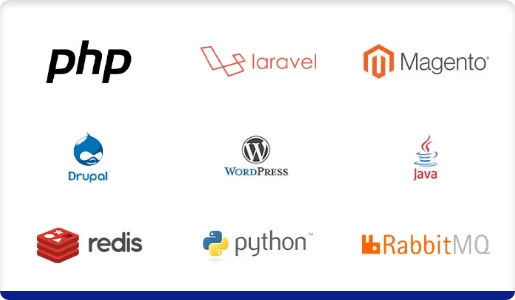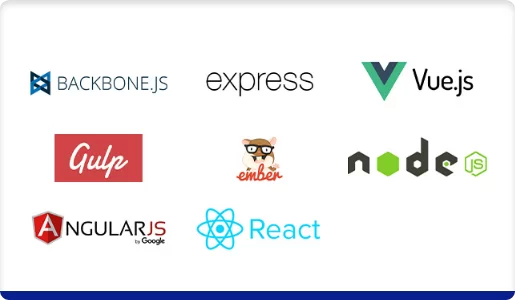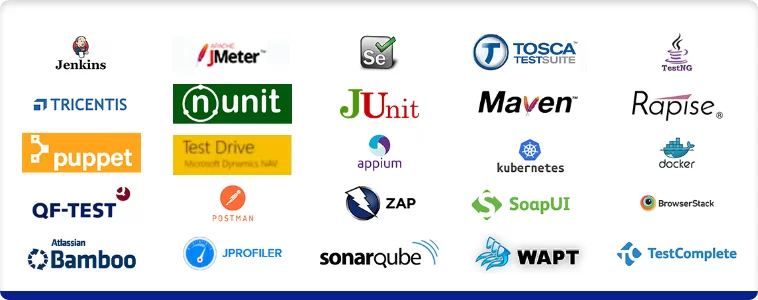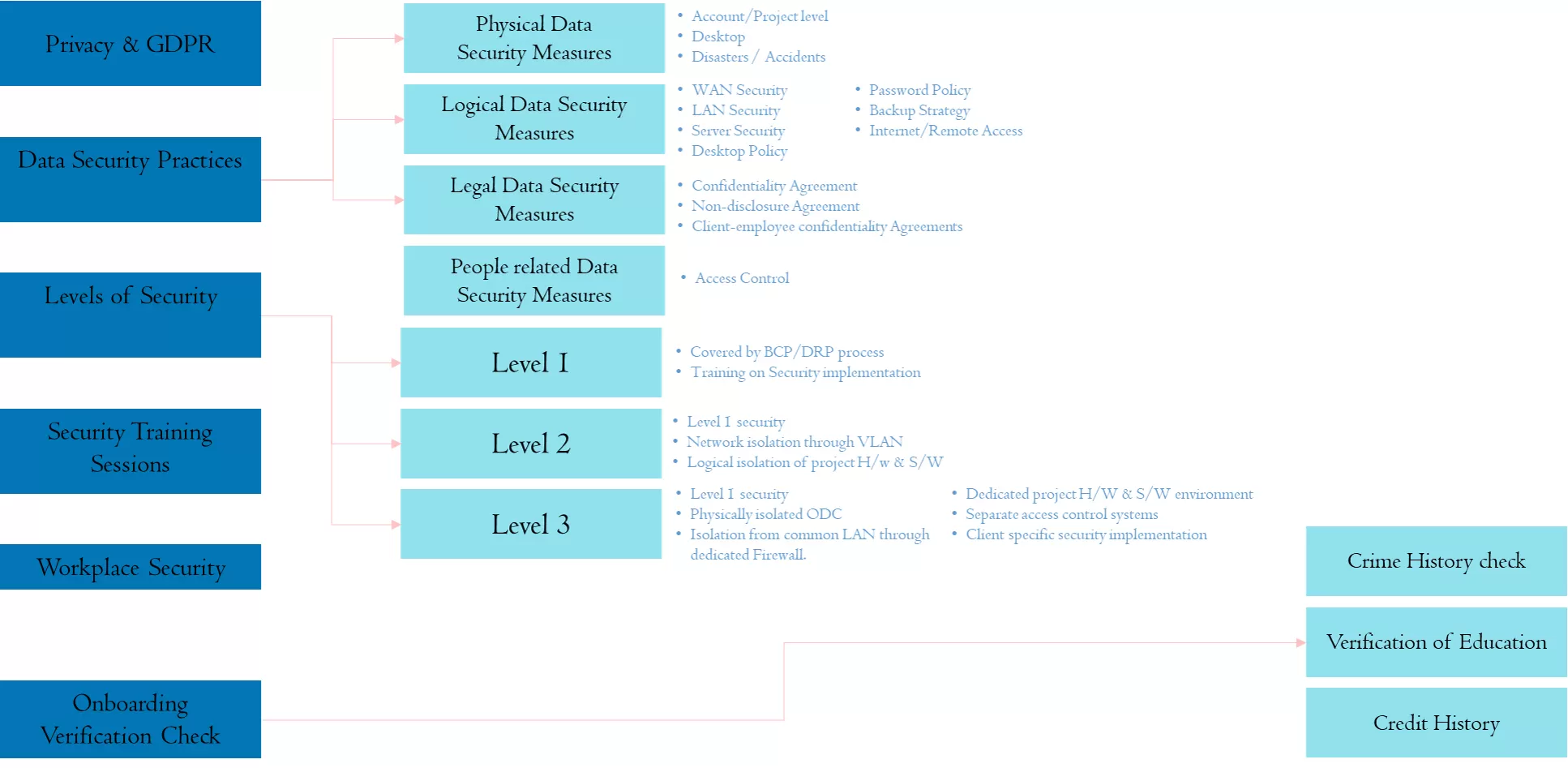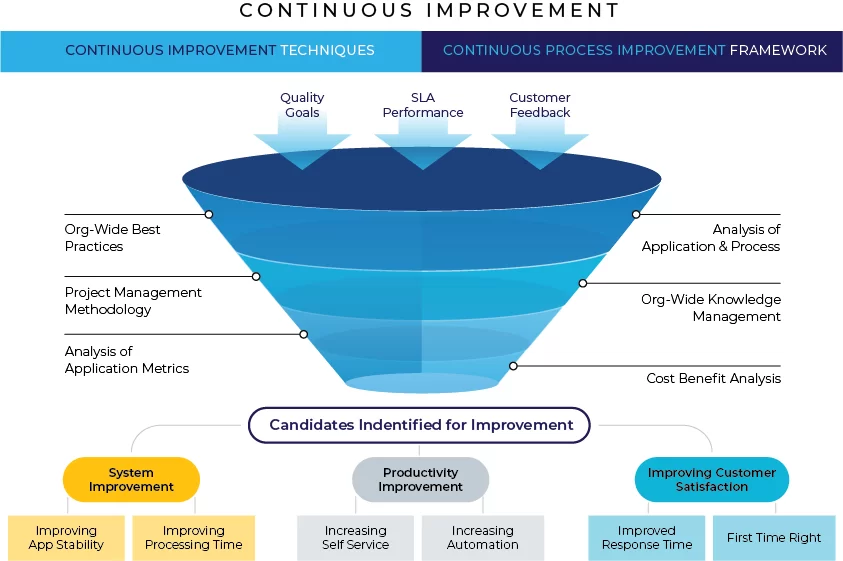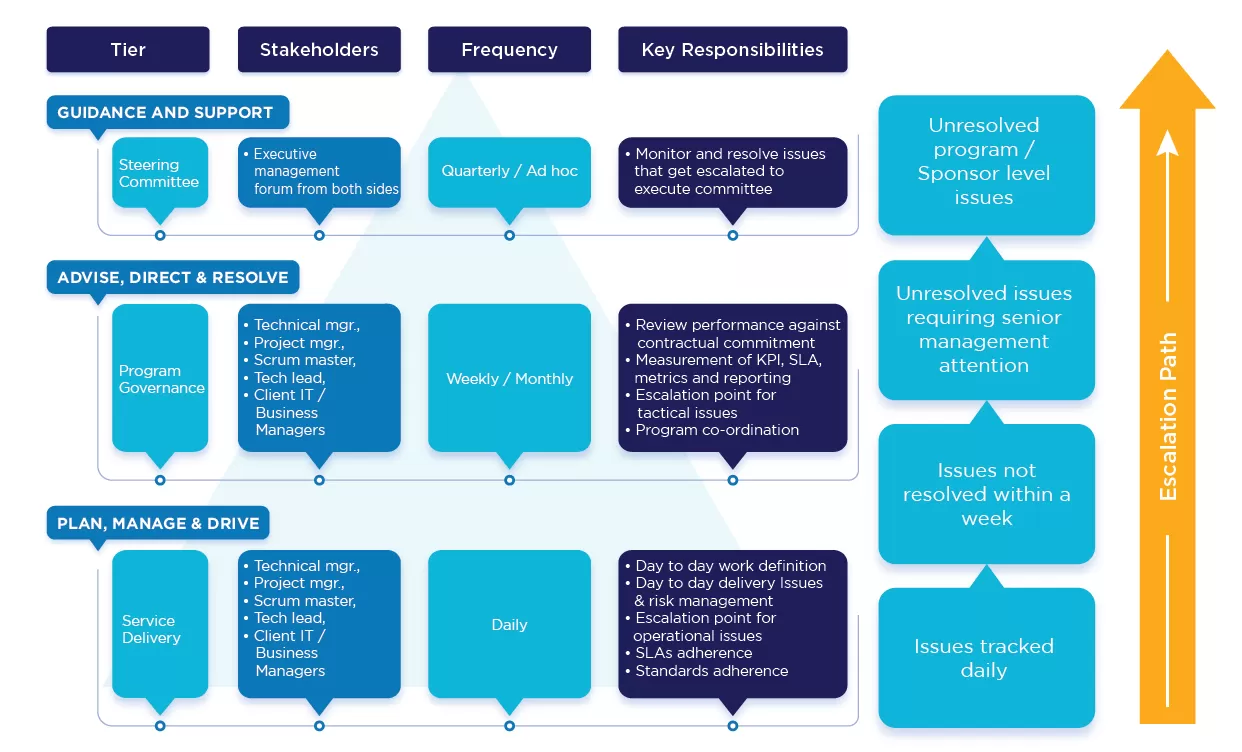Legacy Product
Migration

Re-Design, Re-Transform, Re-Engineer Legacy Applications to Bring Scalability and Agility to Your Business
In the fast paced IT landscape modernizing existing legacy applications is becoming a necessity to ensure technology support and cost effectiveness. To achieve this, you need to upgrade existing solutions to newer technologies such as cloud, mobility, IoT, Blockchain, DevOps, etc. along with providing an intuitive user experience.
Our product modernization services update your legacy applications and transform them using a planned migration strategy, defined by studying your existing systems, ensuring nominal change and maximum reusability. We ensure that you derive the most cost effective legacy application migration while moving your users to the new platform with minimal impact.
Our Capabilities
We have extensive experience in migrating legacy applications to cloud, data migration, code restructuring, adoption of Agile/DevOps, enterprise application integration, and UI modernization.
Our Achievements
Legacy Product Migration Process
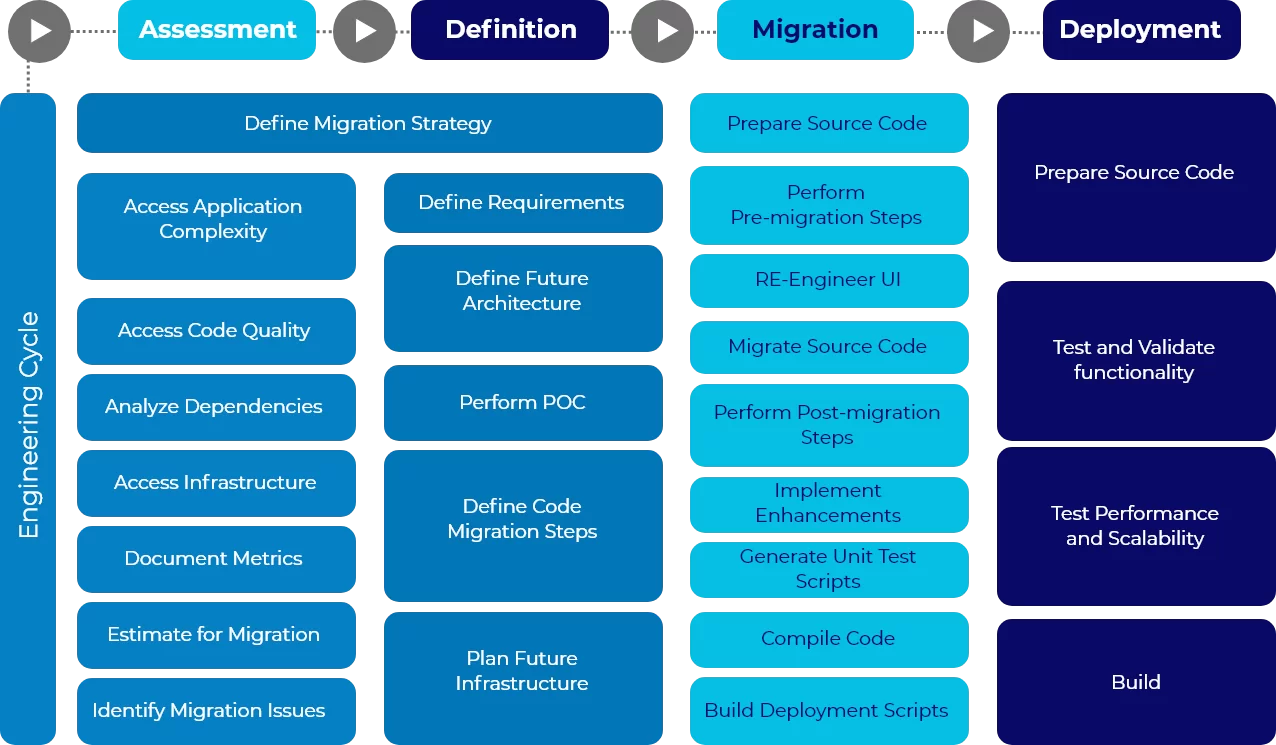
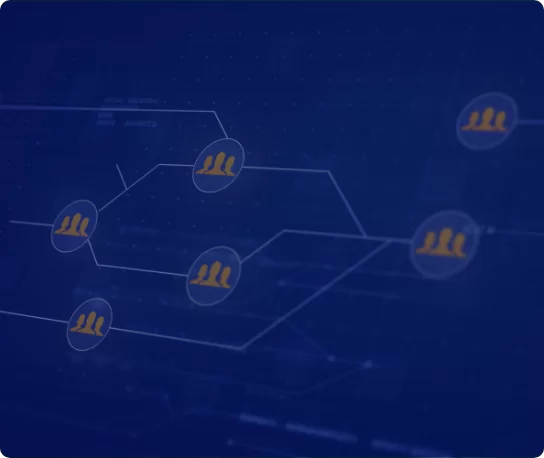 Migrate
Migrate Before It’s Too Late
Legacy Systems
While legacy systems often manage to deliver well beyond their lifecycle, how they go about it might generate sizable overhead for companies. The maintenance of legacy products alone is costly and almost always unnecessary when you consider the alternative. Migrating from legacy code to technologies with ongoing support ensures scalability, security, and availability for years ahead.
Read More
Our Value Multipliers
Digital transformation requires the right blend of business acumen, people, and technologies. Our global team of experts are experienced in a multiverse of different technologies. Our service models to assess and deploy the most sought after technologies mentioned below to perfectly fit your business needs:
-
Microsoft
-
Emerging
-
CMS
-
Open Source
-
JS Framework
-
Testing
We believe in a comprehensive security system. We ensure the best in class security right from following GDPR guidelines, data security practices to adhering to strict guidelines at the workplace.
These are three core objectives of our Security Policies:
Confidentiality – Protection of assets and networks from unauthorized users.
Integrity – Ensuring that the modification of assets is handled in a specific and authorized manner.
Availability – Ensuring continuous access to assets and networks by authorized users.
We believe in constantly pushing our boundaries. Continuous improvement is important because it’s the best way to ensure that we’re doing things in the most efficient, effective, and productive way, every single day of the week, and on every single component that we’re working on.
Responsiveness (Manage and Measure)
Improve Incident management (Jira)
Better Ticket Documentation
Review and corrective action on Aging of tickets
Capture Voice of Customer
Identify Improvement areas
Process Changes – Apply Lean
Root Cause and Causal Analysis (Improve and Maintain)
Mandate RCCA comments for closed tickets
Maintain Database and Prioritize ‘Maximum Impact’ RCCA
RCCA Report-outs
Cost Reduction YoY with no change in Capacity
Support Ticket Reduction (Create Win-Win situation)
Baseline the number of tickets at project kick-off
Re-baseline every end of Qtr.
Incorrect ticket closures
Application Stability
Team will analyze the batch process and look at the opportunity of Process improvements
Reduction of the run time of batch will reduce mainframe utilization
Post Facto Review –OC team can inspect/Review for code changes already moved to further reduce the risk of having bad code in production
Meet Progressive Demand
Evaluate trend based on Historical Data
Projections start in the second month of the Qtr.
Pool of resources
Monthly meeting on capacity loading
Quarterly meeting for capacity adjustments
Second month of the quarter Load shadow resources
Induct incremental resources
Alliances & Partners
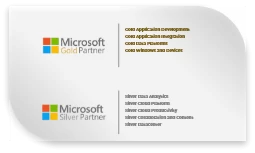



INDUSTRIES
PLATFORMS
SERVICES
CONSULTING
- AlvariumTM - Design Led ConsultingOpens a new window
- Digital Marketing Services
- Automotive Aftermarket
- Digital Logistics
- Remote Engineering




